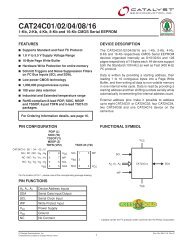CLIPS A Rule-Based Programming Language - derivat
CLIPS A Rule-Based Programming Language - derivat
CLIPS A Rule-Based Programming Language - derivat
Create successful ePaper yourself
Turn your PDF publications into a flip-book with our unique Google optimized e-Paper software.
Cristian Giumale / Lecture Notes 1<br />
<strong>CLIPS</strong><br />
A <strong>Rule</strong>-<strong>Based</strong> <strong>Programming</strong> <strong>Language</strong><br />
<strong>CLIPS</strong> stands for "C <strong>Language</strong> Integrated Production System" and has been developed at<br />
NASA, Software Technology Branch, Lyndon B. Johnson Space Center. The <strong>CLIPS</strong> 6.1<br />
version that it used here is from 1998. <strong>CLIPS</strong> is a rule-based language used for symbolic<br />
computation, in particular as an expert system shell. Although <strong>CLIPS</strong> can be seen as a logical<br />
reasoning system based on rules that encode logical cause-effect implications, here it is seen<br />
from the perspective of associative processing and declarative programming. From this point<br />
of view, the processing in <strong>CLIPS</strong> is similar to that of a Markov Algorithmic Machine, except<br />
from a series of pragmatic extensions thought for programming convenience.<br />
The simplest way to observe the main points of programming in <strong>CLIPS</strong> and to discuss the<br />
main concepts that underline the associative programming paradigm is to solve a problem.<br />
The cheapest paths between two given vertices of a directed graph<br />
Consider a directed graph G=(V,E) with vertices V and edges E and cost:E→R + a weighting<br />
function that associates a real positive cost to each edge from E. Let start and stop be two<br />
vertices from V. Find the shortest paths from start to stop in the graph.<br />
One conventional solution is to use the Dijkstra’s algorithm. However, there is a possible<br />
declarative solution that is based on the following statements:<br />
1. The cheapest paths between start and stop are the useful paths between start and<br />
stop when there are no other useful paths that extend the existing useful paths.<br />
2. Initially, when starting to solve the problem, there is a single path that contains the start<br />
vertex only and has the cost 0.<br />
3. A path x...y,z extends a path x...y if (y,z)∈E and z is not in the path x...y. The cost<br />
of x...y,z is the cost of x...y augmented by the cost of the edge (y,z).<br />
4. A path between two vertices x and y is useful if there are no other cheaper paths<br />
between x and y. There is no point in preserving non-useful paths for further processing.<br />
A non-useful path x...y is discarded immediately after a better path x...y is<br />
discovered.<br />
The statements above are merely declarative. They state what is meant by the cheapest<br />
paths between two vertices of a directed graph and what should be done to solve the<br />
problem: start with an initial path, extend the current paths as long as it is possible do so, and<br />
to get rid of the non-useful paths. In the end, all paths between start and stop are the<br />
cheapest such paths.<br />
Let us translate in <strong>CLIPS</strong> the above story. First, there is the problem of representation: how<br />
the graph and the paths in the graph are represented.<br />
Data representation<br />
In <strong>CLIPS</strong> the problem universe is represented symbolically by facts. A fact is similar to a<br />
symbol from the DR of MAM. It is a statement about the significant attributes of an explicit or<br />
implied problem object. For example, a graph can be fully described by its edges. Each edge<br />
specifies the connected vertices and the connection cost. The goal of the problem is also a<br />
fact. It specifies the start and the stop vertices of the cheapest paths to be computed.
Cristian Giumale / Lecture Notes 2<br />
For example, the cheapest path problem for the directed graph in figure 1 is represented in<br />
<strong>CLIPS</strong> by the following facts:<br />
(edge (from a) (to b) (cost 1))<br />
(edge (from a) (to e) (cost 9))<br />
(edge (from b) (to c) (cost 2))<br />
(edge (from b) (to d) (cost 1))<br />
(edge (from c) (to d) (cost 1))<br />
(edge (from c) (to e) (cost 4))<br />
(edge (from c) (to a) (cost 2))<br />
(edge (from d) (to e) (cost 2))<br />
(edge (from a) (to c) (cost 1))<br />
(cheapest_paths (start a) (stop e))<br />
The facts above are like values of a data type. Here it is more appropriate to talk of instances<br />
of a set of templates. The fact (edge (from a) (to c) (cost 1)) is an instance of the<br />
template (edge (from ...) (to ...) (cost ...)).<br />
a<br />
2<br />
1<br />
1<br />
c<br />
b<br />
2<br />
Figure 1. A weighted directed graph<br />
A template defines a structure similar to a record in Pascal or to a struct in C, structure that<br />
contains field selectors (called here slot selectors). For example, the definition of the template<br />
edge is<br />
(deftemplate edge (slot from) (slot to) (slot cost)).<br />
Note that the type of the slot values is not specified. A slot can have any value (symbol,<br />
number, string, etc.). The validity of the operations performed with these values is checked at<br />
run time. <strong>CLIPS</strong> is a dynamically typed language. The template declarations from the<br />
cheapest paths program are:<br />
(deftemplate edge (slot from) (slot to) (slot cost))<br />
(deftemplate cheapest_paths (slot start) (slot stop))<br />
(deftemplate path (multislot nodes) (slot cost))<br />
Note that the template path has a multislot called nodes. The value of a multislot can<br />
be a sequence, eventually empty, of values (possibly of different types). The value of a slot<br />
is a single value. For example, two valid instances of the template path are:<br />
(path (nodes a b d e) (cost 4))<br />
(path (nodes) (cost 0))<br />
There are special templates that need not be declared. Templates that reduce themselves to<br />
a single multislot are called implied templates and need not be declared. For example, the<br />
fact:<br />
(PC_manufacturers Fujitsu IBM Compaq Dell HP)<br />
corresponds to the implied template (PC_manufacturers ...). It does not need be explicitly<br />
declared.<br />
1<br />
1<br />
d<br />
4<br />
9<br />
2<br />
e
Cristian Giumale / Lecture Notes 3<br />
The facts that exist during the execution of a <strong>CLIPS</strong> program form the factual knowledge base<br />
of the program. The knowledge base varies as new facts are added or retracted while the<br />
program is running. Notice that, apart from the DR of MAM, there is no explicit 1 ordering of<br />
facts in the knowledge base.<br />
<strong>Rule</strong>s<br />
The statements of the algorithm above are coded in <strong>CLIPS</strong> as symbolic structures called<br />
rules. A rule is somewhat similar to the rule of a Markov algorithm and has the format:<br />
(defrule rule_name<br />
pattern1 ... patternn similar to the MA identification_pattern<br />
=><br />
action1 ... actionm ) similar to the MA substitution_pattern<br />
The patterns are parameterized facts (facts that contain variables that designate generic slot<br />
values), eventually incomplete, that correspond to the templates of the program. The patterns<br />
of a rule control the applicability of the rule as the identification_pattern of a rule does in the<br />
Markov Algorithmic Machine. There must exist facts that match all the patterns of a rule for<br />
the rule to be applicable. In the process, the rule variables are bound to values taken from the<br />
matching facts. For example, the rule<br />
(defrule initial_path<br />
(cheapest_paths (start ?x))<br />
=><br />
(assert (path (nodes ?x) (cost 0))))<br />
encodes the statement " Initially, when starting to solve the problem, there is a single path<br />
that contains the start vertex only and has the cost 0". The rule is applicable only if there is<br />
at least an instance of the template cheapest_paths in the factual knowledge base of the<br />
program. Assume, the fact is<br />
(cheapest_paths (start a) (stop e))<br />
Then, the rule initial_path becomes applicable, and the variable ?x is bound to the value<br />
a, the symbol of the start vertex. Note that the pattern (cheapest_paths (start ?x)) is<br />
incomplete and, moreover, it is parameterized. Indeed, for building the root path there is no<br />
need to know the stop vertex. In addition, the name of the start node need not be known<br />
and is represented by the variable ?x.<br />
If there are several patterns, then the pattern matching is sequential. In this way the variables<br />
that occur in patternk can be used in patternj , j>k. However, the scope of the variables is<br />
restricted to the rule within which they occur.<br />
An applicable rule can be applied. If it is applied, the actions action1 ...actionm are<br />
executed in sequence. For the rule initial_path a new fact is constructed and added to the<br />
factual knowledge base of the program. The other statements of the cheapest path algorithm<br />
can be encoded in a similar way. We have to state what are the patterns that make each rule<br />
applicable and what actions are executed if the rule is applied.<br />
• The statement “A path x...y,z extends a path x...y if (y,z)∈E and z is not in the path<br />
x...y. The cost of x...y,z is the cost of x...y augmented by the cost of the edge<br />
(y,z)." is encoded as the rule extended_path.<br />
1 The facts can be ordered implicitly by force of the time stamp of each fact (the time<br />
when the fact is constructed). Using the time stamps, the control engine of <strong>CLIPS</strong> may decide<br />
what applicable rules are effectively applied.
Cristian Giumale / Lecture Notes 4<br />
(defrule extended_path<br />
(path (nodes $?n ?y) (cost ?w))<br />
(edge (from ?y) (to ?z & ~?y & :(not (member ?z $?n))) (cost ?we))<br />
=><br />
(assert (path (nodes $?n ?y ?z) (cost (+ ?w ?we)))))<br />
The first pattern of the rule uses the multifield variable $?n that can be bound to a<br />
sequence – possibly empty – of values. The pattern stands for a path which has some<br />
vertices, designated collectively as $?n, and a terminal vertex designated by ?y. The cost of<br />
the path is ?w.<br />
The second pattern of the rule states clearly that the edge selected to extend the path must<br />
link the vertex ?y to a vertex ?z not member of the path. The restriction “not member of the<br />
path” is encoded as a series of predicates that follow the variable ?z and are separated by the<br />
reserved symbol &. The reading of ?z & ~?y & :(not (member ?z $?n)) is: the value of<br />
?z must be different from the value of ?y and must not be member in the list of values bound<br />
to $?n.<br />
The action (assert (path (nodes $?n ?x ?y) (cost (+ ?w ?we)))) builds a new path<br />
and adds it to the facts of the problem factual knowledge base.<br />
The syntax of the above rule may seem intricate. However, the rule could be written more<br />
explicitly, although not so compact, in the format:<br />
(defrule extended_path<br />
(path (nodes $?n ?y) (cost ?w))<br />
(edge (from ?y) (to ?z) (cost ?we))<br />
(test (and (neq ?z ?y)<br />
(not (member ?z $?n))))<br />
=><br />
(assert (path (nodes $?n ?y ?z) (cost (+ ?w ?we)))))<br />
Here the pattern (test predicate) succeeds if the predicate evaluates to true. There are<br />
many built-in <strong>CLIPS</strong> functions that can be used to restrict the values of the variables from the<br />
patterns of a rule and, therefore, to control the applicability of the rule.<br />
• The statements “A path between vertices x and y is useful if there are no other cheaper<br />
paths between x and y. There is no point in preserving non-useful paths for further<br />
processing. A non-useful path x...y is discarded immediately after a better path x...y<br />
is discovered.” correspond to the rule below.<br />
(defrule prune_non-useful_path<br />
(declare (salience 10))<br />
(path (nodes $? ?x) (cost ?w1))<br />
?f ?w2 ?w1)))<br />
=><br />
(retract ?f))<br />
The rule starts with the declaration (declare (salience 10)) that makes the rule more<br />
important than all the other rules in the program. Indeed, we wish that a non-useful path be<br />
destroyed immediately after a better one is found. The salience of rules can be used to<br />
control the rule application process. If there are several applicable rules, then the most salient<br />
will be applied. If there are several applicable rules with the same salience, usually the rule<br />
applied is randomly selected (see a later lecture on control features). If a rule does not<br />
contain a salience declaration its salience is 0 by default.<br />
Another important element of the rule above is the pattern<br />
?f ?w2 ?w1)))<br />
The facts present in the factual knowledge base of a program are characterized by a special<br />
reference number (a reference for short). If the pattern matching process of a pattern
Cristian Giumale / Lecture Notes 5<br />
succeeds, the <strong>CLIPS</strong> reference of the fact that matched the pattern can be saved for later<br />
use by assigning it to a variable. The way of specifying the assignment is variable <br />
?w2 ?w1))), i.e. a non-useful path.<br />
• The statement “The cheapest paths between start and stop are the useful paths<br />
between start and stop when the process of extending any existing path cannot be<br />
performed any longer” corresponds to the rule result.<br />
(defrule result<br />
(declare (salience -10))<br />
(cheapest_paths (stop ?x))<br />
(path (nodes $?n ?x) (cost ?w))<br />
=><br />
(printout t "path " (create$ $?n ?x) crlf "cost " ?w crlf))<br />
The rule is the least important from the program. It will be applied when no other rule of the<br />
program can be applied. Therefore, the rule is applied when there are no more paths that can<br />
be extended and when there are no more non-useful paths to be retracted.<br />
The program contains the additional rule load_data for loading the factual knowledge base of<br />
the problem with the initial content: the facts that describe the problem instance.<br />
(defrule load_data<br />
=><br />
(printout t "File: ")<br />
(load-facts (read)))<br />
Apparently this rule has no patterns to control its application. However, it can be applied once<br />
only, by force of the refraction principle, discussed later. In order to apply this principle the<br />
rule is automatically transformed by <strong>CLIPS</strong> into<br />
(defrule load_data<br />
(initial-fact)<br />
=><br />
(printout t "File: ")<br />
(load-facts (read)))<br />
The factual knowledge base of a <strong>CLIPS</strong> program is not empty initially. Before any program is<br />
loaded and starts execution there is always an (initial-fact) present in the factual<br />
knowledge base. It acts as the empty string in the Data Register of MAM for making<br />
applicable rules of the kind: :-> substitution_pattern;<br />
The complete <strong>CLIPS</strong> program follows. Note that the textual order of the rules is not important.<br />
Parting from the MAM control, <strong>CLIPS</strong> selects the rule to be applied using the salience<br />
property and other implicit – data dependent – control mechanisms. In addition, note that the<br />
program has a certain degree of non-determinacy. Starting from the initial path, the paths can<br />
be extended in any order still preserving the correctness of the result.<br />
; The minimum cost paths between two given vertices of a directed graph<br />
(deftemplate edge (slot from) (slot to) (slot cost))<br />
(deftemplate cheapest_paths (slot start) (slot stop))<br />
(deftemplate path (multislot nodes) (slot cost))<br />
(defrule initial_path<br />
(cheapest_paths (start ?x))<br />
=><br />
(assert (path (nodes ?x) (cost 0))))
Cristian Giumale / Lecture Notes 6<br />
(defrule extended_path<br />
(path (nodes $?n ?y) (cost ?w))<br />
(edge (from ?y) (to ?z & ~?y & :(not (member ?z $?n))) (cost ?we))<br />
=><br />
(assert (path (nodes $?n ?y ?z) (cost (+ ?w ?we)))))<br />
(defrule prune_non-useful_path<br />
(declare (salience 10))<br />
(path (nodes $? ?x) (cost ?w1))<br />
?f ?w2 ?w1)))<br />
=><br />
(retract ?f))<br />
(defrule cheapest_paths<br />
(declare (salience -10))<br />
(cheapest_paths (stop ?x))<br />
(path (nodes $?n ?x) (cost ?w))<br />
=><br />
(printout t crlf "path " (create$ $?n ?x) crlf "cost " ?w crlf))<br />
(defrule load_data<br />
=><br />
(printout t "File: ")<br />
(load-facts (read)))<br />
A <strong>CLIPS</strong> session to run the program is illustrated below. The contents of the data file<br />
corresponds to the graph in figure 1. The goal is (cheapest_paths (start a) (stop e)).<br />
For details, including ways to trace the execution (a useful experience), see the <strong>CLIPS</strong><br />
reference manual.<br />
<strong>CLIPS</strong>> (load “H:\\CPSC-432\\<strong>CLIPS</strong>\\Minpath.clp”)<br />
<strong>CLIPS</strong>> (reset)<br />
<strong>CLIPS</strong>> (run)<br />
File: H:\CPSC-432\<strong>CLIPS</strong>\Minpath.dat<br />
path (a b d e)<br />
cost 4<br />
path (a c d e)<br />
cost 4<br />
<strong>CLIPS</strong>> (exit)
Cristian Giumale / Lecture Notes 7<br />
Correctness proof of the <strong>CLIPS</strong> program<br />
Although the correctness of the <strong>CLIPS</strong> program is intuitive it can be formally proved by<br />
induction. The general induction schema is shown in figure 2, where Data 0 are the initial data<br />
of the program, say Prog, Data are the data processed by the program at a given moment in<br />
time, and Prop is a property that helps proof the correctness. The aim is to show that if<br />
Prop(Data 0 ) is true and that whenever the program modifies some data Data such that<br />
Prop(Data) is true then the resulting data Data’=Prog(Data) satisfy the property Prop, i.e.<br />
Prop(Data’) is true. Therefore, Prop is an invariant throughout the execution of the program<br />
and, consequently, it will hold for the results Data f of the program.<br />
`<br />
Prop(D)<br />
____________ induction hypothesis<br />
induction<br />
step<br />
base<br />
D’=Prog(D)<br />
case Prop(D0 ) Prop(D’)<br />
______________________________________________<br />
Prop(D f )<br />
Figure 2. Proving the correctness of a program by induction<br />
The following notations are used to characterize the data processed by the cheapest path<br />
<strong>CLIPS</strong> program at any given moment t of time during execution for a given directed graph<br />
G=(V,E):<br />
• All(x) is the set of all paths start...x that exist in the given graph. All(z) stays the<br />
same throughout the execution of the program.<br />
• P(x) is the set of paths start...x stored in the factual knowledge base of the program<br />
at the moment t.<br />
• D(x) is the set of all paths start...x discarded as being non-useful from the beginning<br />
of the program execution until the moment t.<br />
During execution, the data processed by the program are Data(x) = def P(x)∪D(x) for all x<br />
∈ V. Initially, the data of the program are:<br />
P 0 (start)= {start}, and P 0 (x) = ∅ for all x ∈ V, x ≠ start<br />
D 0 (x) = ∅ for all x ∈ V<br />
Let us define the following property of Data(x), relevant for proving the correctness of the<br />
program:<br />
Prop(P(x),D(x))= def<br />
∀p∈P(x),∀q∈P(x),∀r∈D(x). cost(p)=cost(q) ∧ cost(p)
Cristian Giumale / Lecture Notes 8<br />
P’(x),D’(x)= extend(P(x),D(x))<br />
= def { p = select(All(x)); P’(x)= P(x)∪{p}; D’(x)= D(x);}<br />
Due to the refraction control mechanism (discussed in a later lecture) each particular path<br />
start...x is generated once only.<br />
2. Discarding a non-useful path p = start...x from P(x) can be seen as deleting p from the<br />
set P(x) and adding p to the set D(x). Therefore, the effect of a single application of the rule<br />
prune_non-useful_path is D’(x)= D(x)∪{p}, P’(x)=P(x)\{p}, where p is a non-useful<br />
path. Since the rule has the highest salience we can consider that it is applied instantly for all<br />
non-useful paths existing in the current knowledge base of the program at a given moment in<br />
time. Obviously, if there are non-useful paths in P(x) the rule is not applied and the paths<br />
D(x), P(x) are not modified. We shall note:<br />
useful(x);}<br />
non-useful(x) = { p∈P(x) | ∀p’∈P(x). cost(p) > cost(p’) }<br />
P’(x),D’(x)= discard(P(x),D(x))<br />
= def { D’(x)= D(x)∪ non-useful(x); P’(x)= P(x)\non-<br />
the effect of eventually applying the rule prune_non-useful_path for all non-useful paths<br />
from P(x) at a given moment in time during the execution of the program. Actually, such a<br />
moment occurs just after an operation p = select(All(x)) is performed.<br />
The main compound solving action performed at a given moment in time during the execution<br />
of the program is described conventionally by:<br />
P”(x),D”(x)= Prog(P(x),D(x))= def { P’(x),D’(x)= extend(P(x),D(x));<br />
P”(x),D”(x)= discard(P’(x),D’(x));}.<br />
We have now all the ingredients necessary to particularize the generic induction schema for<br />
the <strong>CLIPS</strong> program as shown in figure 3, for any x∈V, and to prove the following theorem.<br />
Theorem. The <strong>CLIPS</strong> program for computing the minimum cost paths in a weighted directed<br />
graph is correct.<br />
induction hypothesis<br />
base case<br />
Prop(P(x),D(x))<br />
___________________<br />
Prop(P 0 (x),D 0 (x)) Prop(P”(x),D”(x))<br />
Prop(P f (x),P f (x))<br />
induction step<br />
P”(x),D”(x)= Prog(P(x),D(x))<br />
______________________________________________________________________<br />
Figure 3. The induction schema for the <strong>CLIPS</strong> program<br />
To prove the correctness of the program we have to show that the base case and the<br />
induction step of the induction schema in figure 3 hold.<br />
Base case. For the start node Prop(P(x),D(x)) holds trivially. For any other node x ≠<br />
start the property holds also since the sets P(x)and D(x) are empty.<br />
Induction step. Consider a node x∈V selected at random such that the operation<br />
extend(P(x),D(x)) can be performed, i.e. there are still non-selected paths in All(x). The<br />
program computes:<br />
P”(x),D”(x)= Prog(P(x),D(x))= def { P’(x),D’(x)= extend(P(x),D(x));<br />
discard(P’(x),D’(x));}.<br />
P”(x),D”(x)=
Cristian Giumale / Lecture Notes 9<br />
The operation extend(P(x),D(x)) is executed first. Assume p is the path selected from<br />
All(x). The result of extend(P(x),D(x)) is:<br />
P’(x) = P(x)∪{p}<br />
D’(z) = D(x)<br />
The result D”(x),P”(x)of discard(P’(x),D’(x)), and hence the result of<br />
Prog(P(x),D(x)), depends of the cost of the path p.<br />
Case 1. The path p is non-useful, i.e. ∀p’∈P(x). cost(p) > cost(p’), hence nonuseful(x)<br />
= {p}. In this case the result of the operation discard(P’(x),D’(x)) is:<br />
P”(x) = P’(x)\non-useful(x) = P(x)∪{p}\{p} = P(x)<br />
D”(x) = D’(x)∪non-useful(x) = D(x)∪{p}<br />
According to the induction hypothesis Prop(P(x),D(x)) holds. Then it is easy to see that it<br />
holds as well for P(x), D(x)∪{p}, i.e. for the pair P”(x),D”(x).<br />
Case 2. The path p has the property ∀p’∈P(x). cost(p)=cost(p’), hence nonuseful(x)=∅.<br />
In this case the result of discard(P’(x),D’(x)) is:<br />
P”(x) = P’(x)\non-useful(x) = P(x)∪{p}<br />
D”(x) = D’(x)∪non-useful(x) = D(x)<br />
Since the induction hypothesis Prop(P(x),D(x)) holds, it is easy to verify that the property<br />
Prop(P(x)∪{p},D(x)) holds. Therefore, Prop(P”(x),D”(x)) holds.<br />
Case 3. The path p is the best so far, i.e. ∀p’∈P(x). cost(p) < cost(p’), hence nonuseful(x)<br />
= P(x). The result of discard(P’(x),D’(x)) is:<br />
P”(x) = P’(x)\non-useful(x) = P(x)∪{p}\P(x) = {p}<br />
D”(x) = D’(x)∪non-useful(x) = D(x)∪P(x)<br />
Since the induction hypothesis Prop(P(x),D(x)) holds, it is easy to see that the property<br />
Prop({p},D(x)∪P(x)) holds. Hence Prop(P”(x),D”(x)) is true.<br />
Since the property Prop(P(x),D(x)) holds during the program execution, it holds just before<br />
the program stops. The program stops when all the paths from All(x) have been selected,<br />
for all x∈V. At this moment we have<br />
∀x∈V . P f (x) ∪ D f (x) = All(x)<br />
where P f (x) is the final set of paths in the factual knowledge base and D f (x) is the overall<br />
set of paths discarded by the program for the node x. Each path start...x from All(x) is<br />
either in P f (x) or in D f (x) and, according to the property Prop(P f (x),D f (x)):<br />
∀p∈P f (x),∀q∈P f (x),∀r∈D f (x). cost(p)=cost(q) ∧ cost(p)
Cristian Giumale / Lecture Notes 10<br />
A declarative model for the min cost paths weighted oriented graphs<br />
The model is biased for generating the paths procedurally, by extending existing paths.<br />
The entities and the constraints in red convey operational information for the above<br />
mentioned process.<br />
Node = Symbol;<br />
ENTITY Edge;<br />
from,to: Node;<br />
cost: NUMBER;<br />
WHERE cost ≥ 0;<br />
END_ENTITY;<br />
ENTITY Graph;<br />
nodes: SET OF Node;<br />
edges: SET OF Edge;<br />
WHERE<br />
∀e∈edges • e.from∈nodes ∧ e.to∈nodes;<br />
END_ENTITY;<br />
ENTITY Path ABSTRACT SUPERTYPE;<br />
graph: Graph; // parent graph<br />
nodes: SEQ OF Node; // nodes of the path<br />
DERIVE<br />
nodes_set: SET OF Node = nodes.seq_to_set();<br />
// seq_to_set converts a SEQ to a SET<br />
cost: NUMBER = sumof{∀e∈graph.edges,u∈nodes_set,v∈nodes_set |<br />
nodes.is_next(v,u) ∧ e.from = u ∧ e.to = v • e.cost}<br />
// is_next(v,u) tests whether v is next to u in a SEQ<br />
WHERE<br />
nodes ⊆ graph.nodes;<br />
// Stepping through the nodes of the path. The constraint is useless<br />
// if there is no need to generate "possible" paths.<br />
∀u∈nodes_set,v∈nodes_set | nodes.is_next(v,u) •<br />
(∃e∈graph.edges • e.from = u ∧ e.to = v)<br />
END_ENTITY;<br />
ENTITY MinCostPath SUBTYPE OF Path;<br />
WHERE<br />
∀Path(path) | path.graph = graph ∧<br />
path.nodes.first() = nodes.first() ∧<br />
path.nodes.last() = nodes.last()<br />
• cost ≤ path.cost;<br />
END_ENTITY;<br />
ENTITY ProblemGoal;<br />
graph: Graph;<br />
start,stop: Node;<br />
path: MinPath;<br />
WHERE<br />
start∈graph.nodes ∧ stop∈graph.nodes;<br />
path.graph = graph;<br />
path.nodes.first() = bounds.start;<br />
path.nodes.last() = bounds.stop;<br />
// Wait until all graph path have been instanced<br />
∀Path(p),Edge(e) |<br />
p.graph=graph ∧ e∈p.graph.edges ∧ p.last()=e.from ∧ e.to∉p.nodes_set<br />
• (∃ExtendedPath(p') • p'.path = p ∧ p'.edge = edge);<br />
END_ENTITY;
Cristian Giumale / Lecture Notes 11<br />
ENTITY SingletonPath SUBTYPE OF Path;<br />
node: Node;<br />
WHERE<br />
node∈graph.nodes;<br />
nodes = {node};<br />
END_ENTITY;<br />
ENTITY ExtendedPath SUBTYPE OF Path;<br />
path: Path; // the parent path of the extended path<br />
edge: Edge; // the edge that extends p<br />
WHERE<br />
path.graph = graph;<br />
edge∈graph.edges;<br />
path.last() = edge.from;<br />
// last returns the last element of a non-empty SEQ<br />
edge.to ∉path.nodes_set; // acyclic path<br />
nodes = path.nodes.append(edge.to);<br />
// procedural interpretation: binding of the slot nodes to a value<br />
END_ENTITY;<br />
A variant of<br />
ENTITY ExtendedPath SUBTYPE OF Path;<br />
WHERE<br />
∃Path(p),Edge(e) •<br />
p.graph=graph<br />
∧ e∈graph.edges<br />
∧ p.last() = e.from<br />
∧ e.to ∉p.nodes_set<br />
∧ nodes = p.nodes.append(e.to);<br />
END_ENTITY;<br />
Possible alternatives for instancing the ExtendedPath entity.<br />
1. Starting from the constraint, automatically derive an instancing algorithm, such as<br />
for-each (Path(p)∈KB)<br />
for-each(e∈path.graph.edges)<br />
if(p.last() = e.from ∧ e.to∉p.nodes_set)<br />
make-instance-of Path(nodes = p.nodes.append(e.to),graph = p.graph);<br />
2. Possible ExtendedPath candidates are considered. Some are already in KB, other could be<br />
generated (how?). Those candidates that satisfy the constraint become instances of the<br />
ExtendedPath.
Cristian Giumale / Lecture Notes 12<br />
; The minimum cost paths between two given vertices of a directed graph<br />
; A <strong>CLIPS</strong> program deriving from the above model<br />
; The program works with a single graph<br />
(deftemplate edge (slot from) (slot to) (slot cost))<br />
(deftemplate path-bounds (slot start) (slot stop))<br />
(deftemplate path (multislot nodes) (slot cost))<br />
(defrule singleton_path<br />
(path-bounds (start ?x))<br />
=><br />
(assert (path (nodes ?x) (cost 0))))<br />
(defrule extended_path<br />
(path (nodes $?n ?y) (cost ?w))<br />
(edge (from ?y) (to ?z & ~?y & :(not (member ?z $?n))) (cost ?we))<br />
=><br />
(assert (path (nodes $?n ?y ?z) (cost (+ ?w ?we)))))<br />
(defrule destroy_non_min_paths<br />
(declare (salience 10))<br />
(path (nodes $? ?x) (cost ?w1))<br />
?f ?w2 ?w1)))<br />
=><br />
(retract ?f))<br />
(defrule solution<br />
(declare (salience -10))<br />
(path-bounds (stop ?x))<br />
(path (nodes $?n ?x) (cost ?w))<br />
=><br />
(printout t crlf "path " (create$ $?n ?x) crlf "cost " ?w crlf))<br />
(defrule load_data<br />
=><br />
(printout t "File: ")<br />
(load-facts (read))


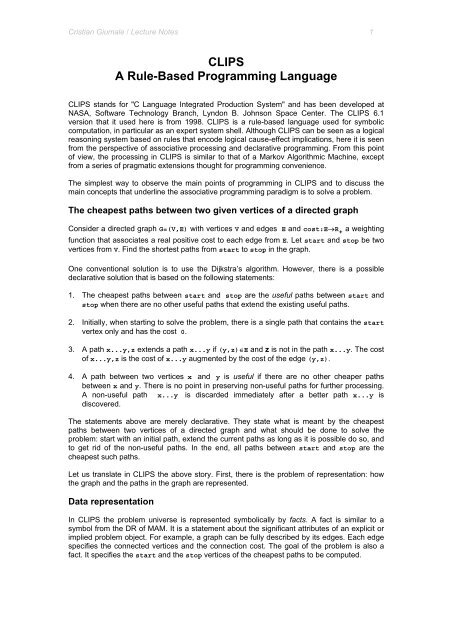
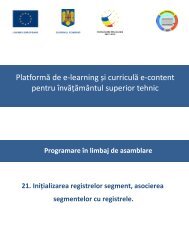
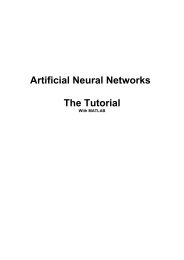
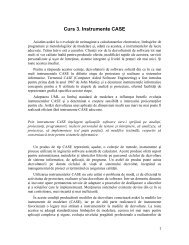
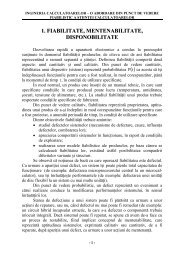
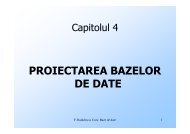
![Florian Moraru - Structuri de date [pdf] - Andrei](https://img.yumpu.com/16899682/1/184x260/florian-moraru-structuri-de-date-pdf-andrei.jpg?quality=85)
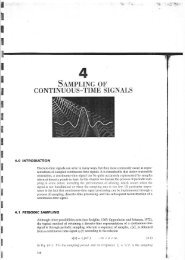
![Capitolul 2 - Elemente de mecanică cuantică [pdf] - Andrei](https://img.yumpu.com/16899601/1/190x245/capitolul-2-elemente-de-mecanica-cuantica-pdf-andrei.jpg?quality=85)
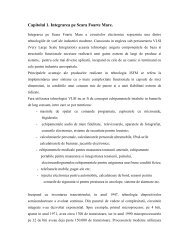

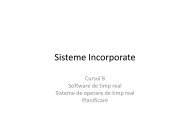
![Curs 2 - Gestiunea sistemului de fișiere [pdf] - Andrei](https://img.yumpu.com/16899511/1/190x143/curs-2-gestiunea-sistemului-de-fisiere-pdf-andrei.jpg?quality=85)
![Curs 5 - Performanțele circuitelor VLSI [pdf] - Andrei](https://img.yumpu.com/16899506/1/190x245/curs-5-performantele-circuitelor-vlsi-pdf-andrei.jpg?quality=85)
